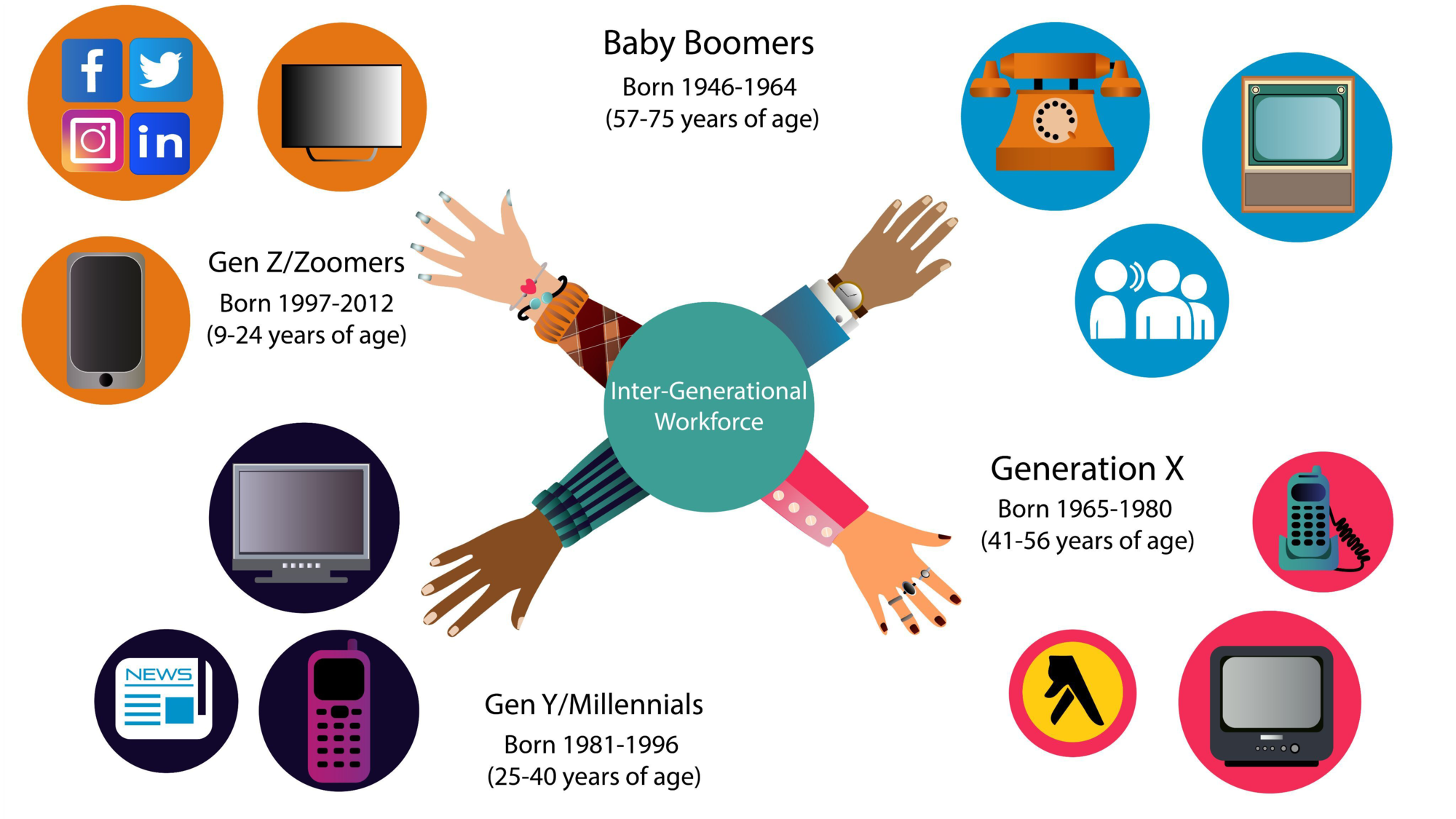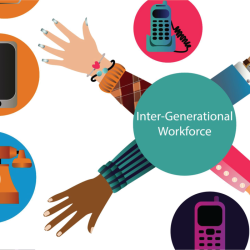Breaking Down the Barriers: How to Promote Communication in a Multi-Generational Workforce

Today’s workplace is a fascinating mix of Boomers, Zoomers, and everyone in between. Each generational label accounts for nearly 20 years of history that shaped attitudes and motivations. These labels have also led to stereotypes — oversimplified ideas about people based on their generation.
Familiar generational labels include:
- Baby Boomers: Born 1946-1964 (57-75 years old)
- Gen Xers: Born 1965-1980 (41-56 years old)
- Millennials: Born 1981-1996 (25-40 years old)
- Generation Z aka “Zoomers”: Born 1997-2012 (9-24 years old)
Generational stereotypes include positive and negative overgeneralizations. Younger generations are often stereotyped as technology-savvy employees who want to know that their work is meaningful. On the flip side, they can be seen as less loyal to their companies, entitled to promotions, and more “me-oriented” than older employees.
Older generations are often seen as hard workers who follow the rules and have enjoyed the benefits of a strong economy during their prime earning years. However, they may also be viewed as technophobes who resist change.
Generational stereotypes exist but they don’t have to affect our communication and relationships with our coworkers. Once we are aware of these stereotypes, we can take steps to lower their impact on how we view others.
Stereotypes are a problem because they can get in the way of people understanding each other and can make collaboration challenging. Since so much of our work at OIT relies on collaboration, pushing back on these stereotypes is critical to our success.
The first step to challenge stereotypes is becoming aware of our own implicit biases. Implicit biases are automatic, unexamined thoughts that we all have.
For example, if you react to a co-worker’s choice or behavior, identify your response and ask yourself why you feel the way you do. Developing awareness of biases allows you to tune into reactions that may otherwise go unnoticed.
So how can we stop stereotypical thoughts in their tracks? Start thinking about people you know in that generation who don’t fit the stereotype.
You can also try to change your perspective by imagining what it would be like to be a part of the generation you’ve been stereotyping. Once you begin to examine your thoughts, you can use these strategies to change your perceptions about people in other generations.
Managing Multi-Generational Teams
If you’re in a team lead or management position, consider applying some of these best practices to build rapport and encourage communication that resonates across generational lines.
Bridging the generational communication gap requires strategies that cultivate fellowship and respect. Managers can provide opportunities to allow their team to get to know one another on a more personal level. The more we know about people, the less likely we are to stereotype them into groups.
It also helps to emphasize shared goals by focusing on commonalities that reinforce a sense of “we.” This encourages a multi-generational team to view themselves as working toward the same goal and breaks down the “us” versus “them” barrier.
Despite best efforts, communication breakdowns can still occur within a multi-generational team due to differences in communication preferences. Stereotypically speaking, older generations tend to rely more on voicemails and emails. Younger generations may lean more toward pings and Slack messages to communicate with their coworkers.
Managers can help by offering a variety of communication tools. Employees will appreciate the option to use video conferencing, face-to-face, conference calls, and Slack or other collaboration software.
No matter the communication channel, you can help set expectations around their usage by establishing a communication agreement for your team. Such agreements can give voice to the unspoken expectations for how team members should communicate with one another.
Consider surveying your multi-generational team to reach a consensus before you establish a communication agreement. The following are some example questions to include in your survey:
- Are there any communication challenges on the team?
- Which communication channel does the team use most? Is it efficient?
- What communications need to be prioritized?
- What are the expectations for response times to email, chat, etc.? Are these expectations necessary for successful communication?
- How should we handle “do not disturb” times?
- How should we conduct meetings to maximize efficiency and participation?
- Are there any other actions needed to improve communication efficiency and quality?
Using these techniques can help promote strong communication across a multi-generational workforce. Remember that generational differences are neither right nor wrong, just a facet of diversity! The keys to successful communication on a multi-generational team require awareness and proactive approach to communication.

